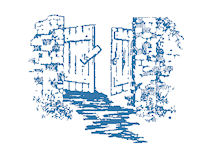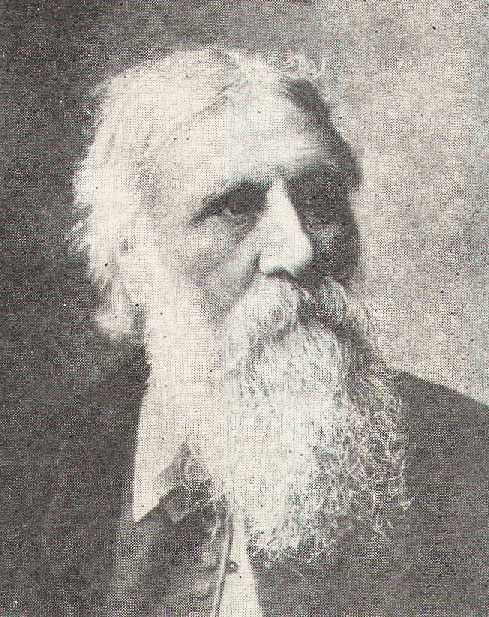


|

|

| Level* | |||
|---|---|---|---|
| 1864 | The Light Princess and Other Fairy Tales | 2 | Literature / Fairy Tales / Literary |
| 1871 | At the Back of the North Wind | 2 | Literature / Fiction / Imaginative |
| 1875 | The Wise Woman | 3 | Faith / Parable |
| 1877 | The Princess and Curdie | 1 | Literature / Fiction / Imaginative |
| 1907 | The Princess and the Goblin | 1 | Literature / Fiction / Imaginative |
Author biography from the Junior Book of Authors, 1935; courtesy of the H.W. Wilson Company
George MacDonald was a sickly boy, often in bed with pleurisy. But he did his share of work on his father's farm, surveying and tilling the soil. The farm was in northern Scotland, near the town of Huntly, where he was born. He had plenty of good times, too. With his five brothers he swam and fished in the rivers and in winter dug caves in the snow and had snowball battles. He loved to ride horseback. On market days he would hurry from school to the inn where the shepherds gathered and listen to their talk in the Gaelic language. It did not matter that his clothes were shabby.
At the age of sixteen he entered King's College in the city of Aberdeen, many miles away. He took an active part in the school debates and in drawing room charades, but otherwise did not mix much with other students. Receiving his A.M. degree, he went to London, England, and worked three years as tutor in a private home. Then he studied for the Congregational ministry at Highbury College, London.
At twenty-five, MacDonald became the village pastor at Arundel, in Sussex, England. He was married to Louisa Powell, and they had eleven children, four of whom died in his lifetime. Forced to resign the Arundel pastorate after three years because of his liberal views, he lived for a time in Manchester, preaching, lecturing, and writing. During this period he grew a beard and published his first book, a dramatic poem, which brought him the friendship of John Ruskin and Lady Byron, widow of the poet Lord Byron. Another friend was Lewis Carroll, whose manuscript of Alice's Adventures in Wonderland was published largely because of the MacDonald children's enthusiasm for it.
After a visit to Algiers in northern Africa for his health, and a period at Hastings on the English channel, MacDonald settled in London and adopted the profession of literature. In his thirty-fourth year he began publishing fairy tales for children. But it was with a series of novels of Scottish peasant life that he achieved conspicuous success. For several years money was scarce, his sole income being from teaching and lecturing. One day, when there was not one penny in the house and scarcely enough food for the children's dinner, the postman brought a letter enclosing a check for £300, or about $1,500, left him by Lady Byron, who had died.
At forty-eight MacDonald made a lecture tour of the United States, his most popular subject being Robert Burns. A sum of money was raised for him, inasmuch as his novels had been published in America without his permission, bringing him nothing.
Out of consideration for his daughter Mary Josephine, who was gravely ill, MacDonald went to Italy in his fifty-third year. The girl died, but he found the climate so beneficial to his own health that he remained there the rest of his life, except for periodical visits to England, in the summers. At Bordighera, on the Italian Riviera, he settled in a house planned by himself and donated largely by friends. He called the house Casa Coraggio. Twice a week, Wednesday and Sunday, in the huge main room of Casa Coraggio, he entertained many friends and strangers. Usually he would talk to them about literature, or, on Sunday, read the Bible. His son and biographer Greville MacDonald recalls him at such times "with his white head and beard, his searching blue eyes, his crimson velvet cap, seated in a low armchair by the fire, two candles on a little gate-legged table before him."
On other occasions the room was the scene of organ concerts by Mrs. MacDonald, the entire proceeds going to the Catholic Church where she was organist and choir director. Or there would be dances, entertainments, and orations. At Christmas time the members of the family gave living tableaux, or pictures, with children of the town as audience.
MacDonald suffered all his life from illness. Various treatments did little good. He was most benefited by his ability to lie down and sleep at any moment. His chief recreation was driving and then he would be seen in a white serge suit, red cloak, and a gray felt hat.
He died in England, at Ashtead, Surrey, at the age of eighty, outliving his wife by three years. His body was cremated and the ashes carried to Italy and buried at Bordighera beside his wife's grave.
In forty-two years of writing he produced some fifty volumes, mostly novels. At the Back of the North Wind is the favorite with boys and girls, along with two other fairy tales: The Princess and the Goblin and its sequel The Princess and Curdie. Also popular are his stories The Light Princess, A Double Story, and Ranald Bannerman's Boyhood.
George MacDonald's eldest son, Greville MacDonald, also became a writer of stories for children, but only after a long career as physician at King's College Hospital. He was born January 20, 1856, in Manchester. At the age of six, when his mother had finished reading the manuscript of Lewis Carroll's Alice in Wonderland, he exclaimed that "there ought to be sixty thousand volumes of it." At sixty-six, after producing a number of books on medical subjects, he wrote a fairy romance called Billy Barnicoat and this is the book by which he is best known to young readers. It concerns the magical adventures of a boy brought up among the superstitious fisher folk of a little haven on the Cornish coast of England. There is a sequel, County Billy, [should be Count Billy] in which the boy experiences shipwreck and capture by pirates. The books are illustrated by Francis Bedford.
Greville MacDonald makes his home at Wildwood, Haslemere, England.
| LEVEL | AGE RANGE |
| 0 | Kindergarten |
| 1 | Grades 1 to 3 |
| 2 | Grades 4 to 6 |
| 3 | Grades 7-9 |
| 4 | Grades 10-12 |
| Copyright (c) 2005 - 2023 Yesterday's Classics, LLC. All Rights Reserved. |